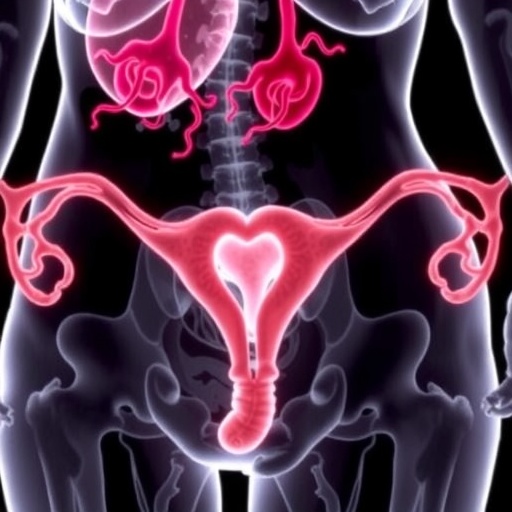
Credit: NASA image
Disease ecologists working in the Amazonian city of Iquitos, Peru, have quantified for the first time how a fever affects human mobility during the outbreak of a mosquito-borne pathogen. The findings were published by Proceedings of the Royal Society B.
"When you are sick with dengue, or another illness causing fever, your behavior can change," says Gonzalo Vazquez-Prokopec, an assistant professor in Emory University's Department of Environmental Sciences, and senior author of the study. "We've found that people with a fever visit 30 percent fewer locations on average than those who do not have a fever, and that they spend more time closer to home. It may sound like stating the obvious, but such data have practical applications to understand how human behavior shapes epidemics. No one had previously quantified how a symptom such as fever changes mobility patterns, individually and across a population, in a tropical urban setting like Iquitos."
An issue in tracking an infectious disease like dengue, chikungunya and Zika is that most of the people infected are asymptomatic, or do not have symptoms severe enough to trigger a doctor visit. "They may not feel sick at all, and yet they could be infecting others, which could help explain how these pathogens move explosively across a population," Vazquez-Prokopec says. "We need to rethink the way we do disease surveillance and control if asymptomatic people are important drivers of transmission."
Trying to control the spread of a disease is like chasing a fire, he adds. "You know that a fire may be at the home of a sick person but, using the data we have for current models, you don't really know where the fire is going next."
About 550 people from Iquitos participated in the study. They included subjects who did not have a fever at the time of the study and those who did. The feverish subjects were also divided into those who tested posted for dengue and those who did not. Data on the movement of participants was collected through interviews and validated using wearable global positioning system loggers.
The study was part of a major research project in Iquitos, which began in 2008, to study the ecology of dengue fever. Dengue is spread by the Aedes aegypi mosquito, the same species that spreads the chikungunya and Zika viruses.
With the imminent arrival of Zika virus to Iquitos, the researchers expect that the data they have collected on dengue transmission will also add to the understanding of how Zika and chikungunya spread through a population.
During the first phase of the project, the researchers showed that human movement is a major driver of the spread of a vector-borne disease like dengue in an urban environment. They are now trying to learn more details about how symptoms and behavior are coupled to drive disease outbreaks.
Symptoms of people infected with a disease fall on a continuum, from no symptoms at all, to so severe they are hospitalized. For the current study, the researchers focused on the impacts of fever, since it is a classic marker of disease, and it is objective and easy to quantify.
The researchers are continuing to investigate how variation in symptoms of illness affects human mobility, using both objective and subjective signs, to refine the data and hone in on more detailed patterns of disease transmission.
"The more we learn about the role of human movement in the transmission of a mosquito-borne disease, the more we realize that we need to change the way we approach controlling these diseases," Vazquez-Prokopec says.
###
The Iquitos project is supported by funding from the U.S. National Institutes of Health and the Department of Homeland Security. Co-authors of the study include researchers from the University of Notre Dame, the University of California, Davis, the National Institutes of Health, Tulane University, the Universidad Peruana Cayetano Heredia in Peru, Andrews University and San Diego State University.
Media Contact
Carol Clark
[email protected]
404-727-0501
@emoryhealthsci
http://whsc.emory.edu/home/news/index.html





